Metaverses For Business: How Companies In China And The Rest Of The World Are Exploring Web3
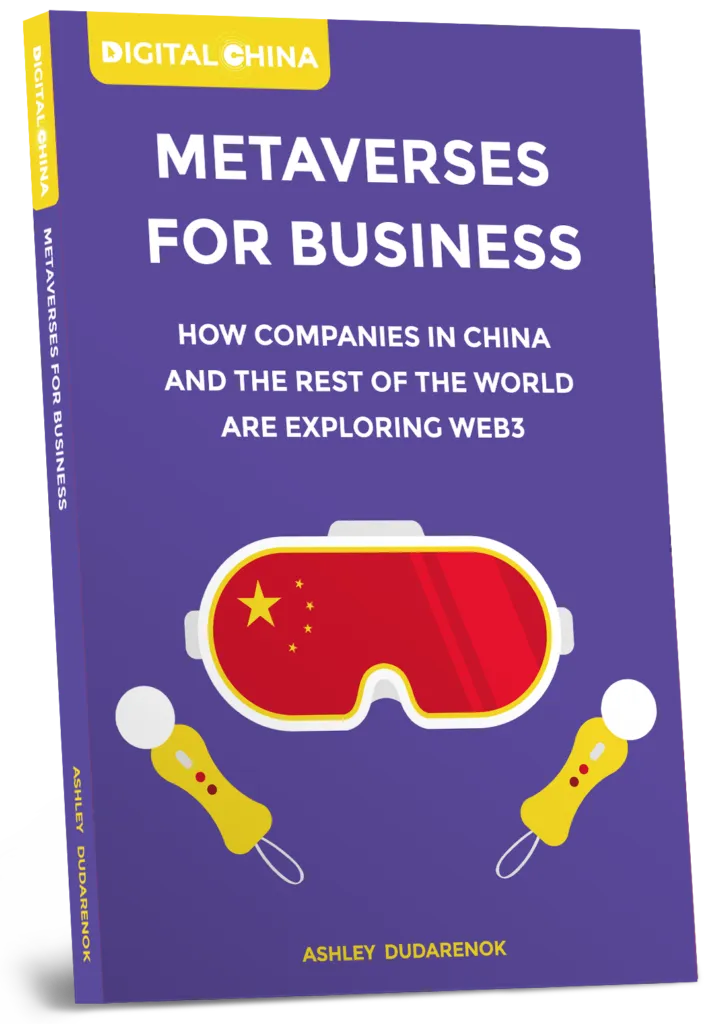
As technology continues to evolve, metaverses and Web3 are transforming the way businesses operate, engage with customers, and create value. Once seen as futuristic concepts, the metaverse and Web3 technologies have now entered the mainstream, reshaping industries from retail and entertainment to healthcare and real estate.
“Metaverses for Business: How Companies in China and the Rest of the World Are Exploring Web3” unpacks how these technologies are revolutionizing both consumer experiences and brand interactions. It delves into how businesses, particularly in China, are leveraging immersive digital worlds to expand market reach, build innovative customer experiences, and generate new revenue streams.
This book covers both the global impact of the metaverse and localized examples from China, which has emerged as one of the most aggressive adopters of Web3 technologies and social commerce. It provides actionable insights for brands aiming to future-proof their business and enhance customer engagement by embracing digital transformation.

WHAT'S INSIDE THE METAVERSE BOOK?
The metaverse is an evolving digital universe where consumers interact through avatars, purchase virtual goods, and experience immersive content. Web3, powered by blockchain and decentralized technologies, underpins this virtual ecosystem, providing users with more control over their data and enabling the creation of digital assets like NFTs and cryptocurrencies.
The book explores:
How companies across China and the West are adopting Web3
technologies.
The impact of virtual reality (VR), augmented reality (AR), and
gaming platforms in building the metaverse.
Brand case studies of successful metaverse and Web3 adoption,
from entertainment to retail.
How brands can build immersive customer experiences that bridge
the gap between the digital and physical worlds.
Strategic advice for navigating the global and local metaverse
ecosystem, with practical tools for implementation.
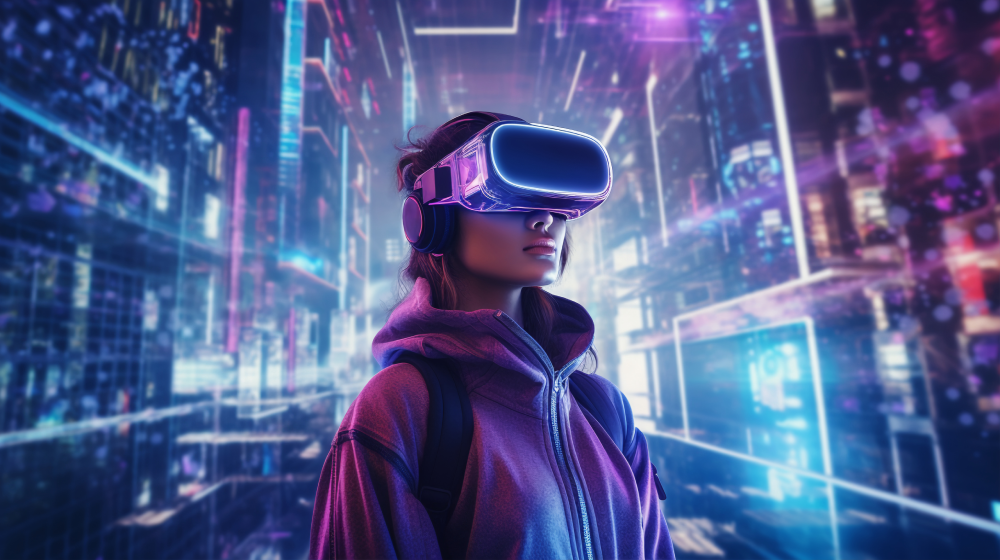
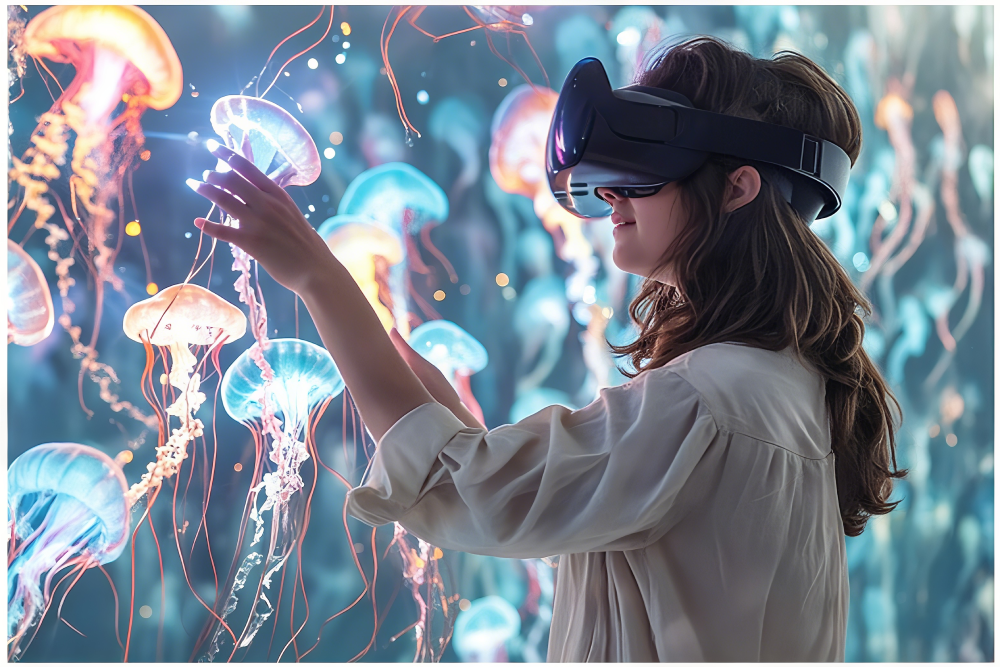
UNDERSTANDING METAVERSES AND WEB3
While hype clouds the meaning, a metaverse simply refers to highly interactive virtual spaces where users can explore, create, socialize, work, or trade. It includes fully virtual environments like Roblox, hybrid experiences like Pokemon Go, and smart city digital twins used for urban planning. Importantly, a true metaverse is persistent, synchronous, interoperable, and powered by its own functioning economy. Today, no fully open metaverse exists yet, but many platforms are building critical parts of it.
“Web3 isn’t just about NFTs or crypto. It’s about user-owned digital
spaces.” — Vishal Mishra, Co-founder, Metaverse Simplified
Key trends shaping Web3 and the metaverse include:
NFTs: Digital assets that represent ownership of unique virtual
goods.
Virtual Goods: Virtual items, including clothing and accessories, that are increasingly becoming integral to consumer identity and online presence.
Cross-Border E-Commerce: Platforms like Tmall and Meituan are extending their virtual storefronts globally, giving international brands new opportunities to sell products directly to consumers in the metaverse.
By 2025, it’s projected that Web3 technologies will represent $1.5 trillion in value, with China leading the charge. Companies investing in the metaverse today are positioning themselves for growth in a future dominated by virtual worlds, where customer loyalty, brand identity, and engagement will be driven by immersive digital experiences
WHY DOES WEB3 EXPLORATION IN CHINA MATTER
Forecasts for the metaverse economy are ambitious. Morgan Stanley predicts metaverses could unlock US$8.3 trillion in advertising and e-commerce value, while Citibank estimates a US$8-13 trillion market by 2030. AR/VR investments are rising, with global spending expected to top US$74 billion by 2026. Beyond consumer goods, B2B training, education, healthcare simulations, and smart city management are generating growing revenue streams.
China’s government actively supports metaverse development, embedding it into five-year economic plans, while many Western governments take a “wait-and-see” approach. Chinese companies like Tencent, Alibaba, Baidu, and Huawei see the metaverse not just as entertainment but as industrial infrastructure. Meanwhile, in the West, consumer entertainment platforms like Roblox, Fortnite, and Horizon Worlds dominate headlines.
On the user side, Chinese consumers show greater optimism about XR and immersive technologies than their Western counterparts. This is driven by China’s deep mobile-first culture and rapid technology adoption habits.
Chinese Companies Pioneering Web3 And Metaverses
Tencent:
Tencent continues to be a central figure in China's metaverse development. The company has joined a government-led working group aimed at establishing metaverse industry standards, alongside other tech giants like Huawei and Baidu . Tencent is also investing heavily in AI-driven initiatives to bolster its metaverse and gaming ventures .
Alibaba:
While Alibaba has scaled back some of its metaverse operations, including layoffs in its Yuanjing unit , the company is redirecting focus towards AI applications, investing over US $53 billion in AI infrastructure over the next three years . This strategic pivot aims to integrate AI into various aspects of its business, potentially influencing future metaverse-related endeavors.
Huawei:
Huawei is actively participating in the development of metaverse standards through collaboration with other major tech firms . The company emphasizes the convergence of technologies like digital twins, mixed reality, and blockchain to form the next generation of the internet .
Baidu:
Baidu is set to launch the next iteration of its artificial intelligence model in the second half of 2025 . This development is expected to enhance its metaverse platform, Xi Rang, by providing more advanced AI capabilities.
NetEase:
NetEase continues to expand its presence in the metaverse through its virtual conference platform, Yaotai. The company is also sharing its game development expertise on international stages, such as the 2025 Game Developers Conference . ByteDance ByteDance is reportedly developing AI-powered smart glasses to compete with Meta's wearable technology . This initiative aligns with its broader ambitions in the AR/VR space, following its acquisition of VR headset maker Pico in 2021.
ByteDance
ByteDance is reportedly developing AI-powered smart glasses to compete with Meta's wearable technology . This initiative aligns with its broader ambitions in the AR/VR space, following its acquisition of
VR headset maker Pico in 2021.
Bilibili:
Bilibili remains a cultural force among China's younger generation, leveraging local content trends and the rise of social commerce for user growth and monetization . The platform continues to explore virtual idols and metaverse-related content to engage its audience.
Ranmai (Startup)
Ranmai Technology's hyper-realistic virtual influencer, Ayayi, has been active since May 2021 and currently has a significant following on platforms like Weibo and Red . Ayayi represents the growing trend of virtual influencers in China's digital landscape.
Moutai(Startup)
Kweichow Moutai has embraced the metaverse by launching its own digital world, the “Xunfeng Digital World” (巽风数字世界), aiming to build a virtual community for Moutai fans . This initiative reflects the company's efforts to blend tradition with modern digital experiences.
Western Companies And Web3 Exploration
Meta (Facebook):
Meta continues to be a dominant force in the metaverse space. Despite substantial investments—over US $60 billion since 2020—and notable losses in its Reality Labs division, Meta remains committed to its
metaverse vision. In 2025, the company launched "Project Warhol," a data collection initiative aimed at enhancing its Codec Avatars for more realistic virtual interactions. Additionally, Meta's Horizon Worlds platform has expanded its reach, and the company maintains a significant market share in metaverse hardware through its Quest VR headsets .
Microsoft:
Microsoft has solidified its position in the metaverse by integrating Mesh, its mixed reality platform, into Microsoft Teams, facilitating holographic meetings and virtual collaboration. The company's acquisition of Activision Blizzard for US $68.7 billion has bolstered its gaming content portfolio, providing a strong
foundation for immersive experiences. Furthermore, Microsoft's investment of over $20 billion in AR/VR and cloud-based metaverse infrastructure underscores its commitment to enterprise applications in the metaverse .
Apple:
Apple has entered the metaverse arena with the development of its AR glasses, rumored to be named "iGlass." These glasses are expected to integrate seamlessly with Apple's ecosystem, offering users immersive experiences in entertainment and productivity. While details remain limited, Apple's foray into
AR hardware signifies its intention to compete in the metaverse hardware market .
Improbable:
Improbable has made significant strides in metaverse infrastructure through its M2 (MSquared) network, enabling interoperability among virtual worlds. The company's development of the Somnia blockchain, capable of processing over 400,000 transactions per second, supports large-scale metaverse applications.
Collaborations with major sports organizations, like Major League Baseball, highlight Improbable's role in
creating immersive virtual experiences .
Niantic:
Known for "Pokémon Go," Niantic has shifted focus to its AR platform, Lightship, aiming to build a "real-world metaverse." The company's recent sale of its gaming division allows it to concentrate on
developing AR experiences that blend digital content with physical environments .
Beyond tech giants, fashion powerhouses like Nike and Gucci have redefined brand culture through NFTs and immersive digital experiences. Meanwhile, concerts, gaming worlds, and virtual showrooms are no longer just experiments—they’re now core engagement models. For Gen Z, who already spend hours daily in digital realms, these virtual experiences aren’t optional extras—they’re where brand loyalty is built, stories are told, and communities thrive.
Visions And Possibilities
Long-term, metaverses will integrate AI, blockchain, and extended reality into daily life—from entertainment to work, from healthcare to governance. Industrial applications, education, healthcare, and
entertainment will drive mass adoption before purely social experiences catch up.
China’s strategic government support may allow it to create the first major regional open metaverse.
Meanwhile, Western companies are focusing on commercial entertainment platforms and decentralized
asset ownership models.
Key Highlights: What You Need To Know About Web3 In China
CHINA’S PRAGMATIC LEAP INTO THE METAVERSE
Unlike in the West, where skepticism runs high, China approaches the metaverse pragmatically. With 99.6% mobile penetration and a mobile-first culture (CNNIC 2024), Chinese consumers see Web3 technologies as a natural extension of their digital lives. Companies like Florasis and YueHua Entertainment have used digital avatars and virtual influencers to maintain engagement while sidestepping risks associated with human celebrities.
THE WEST'S CREATIVE EXPERIMENTATION
Western brands use the metaverse to push creative boundaries. Nike’s Nikeland on Roblox allowed users to co-create virtual sneakers, blending brand interaction with user-generated content. Meanwhile, McDonald’s and Panera have filed trademarks for virtual restaurants, anticipating new ways to blend real-world food services with virtual experiences.
YOUTH DOMINATION AND THE GENERATIONAL DIVIDE
83.5% of metaverse users are 18 and under. Platforms like Roblox and Minecraft have built digital playgrounds where young users socialize, create, and transact. A Bain study found that 53% of young gamers would prefer inheriting a vacation home in the metaverse over one on a real island. Brands aiming to stay relevant with Gen Z and Gen Alpha must learn to speak fluent metaverse.
REAL BUSINESS APPLICATIONS: BEYOND GAMES AND NFTS
Metaverses are not just games. They’re spaces for: Training simulations (e.g., Siemens’ industrial metaverses) City planning (Shanghai’s “digital twin”) Healthcare (virtual surgery planning) Architecture and design (virtual prototyping) Companies that view Web3 as a mere gimmick are missing its foundational role in shaping future infrastructure.
KEY TAKEAWAYS: HOW TO MASTER WEB3 IN CHINA AND BEYOND

THINK BEYOND VIRTUAL GOODS
The real opportunity lies not in selling NFTs, but in building ecosystems where digital identity, ownership, and loyalty converge.

PRIORITIZE EXPERIENCE, NOT JUST PRESENCE
Whether it’s a pop-up in Decentraland or a virtual concert, experiences must be immersive, emotionally resonant, and community-driven.

STAY PRAGMATIC AND FUTURE-FOCUSED
You don’t need to build a “full metaverse” now. Start with practical steps: virtual product demos, digital twins for training, or XR customer service.

LEARN FROM THE YOUTH
Brands that dismiss gaming platforms or “youth culture” risk missing where future mass adoption will occur. Platforms like Roblox are the new social networks for Gen Z.

LOCALIZE YOUR METAVERSE STRATEGY
Cultural context matters. China’s optimism and mobile-first habits differ greatly from Western skepticism. Tailor your approach regionally.
CASE STUDY: METAVERSE STRATEGY IN THE CULTURAL TOURISM SECTOR – A NEW APPROACH FROM MATE UNIVERSE AND DINGDANG CULTURAL TOURISM
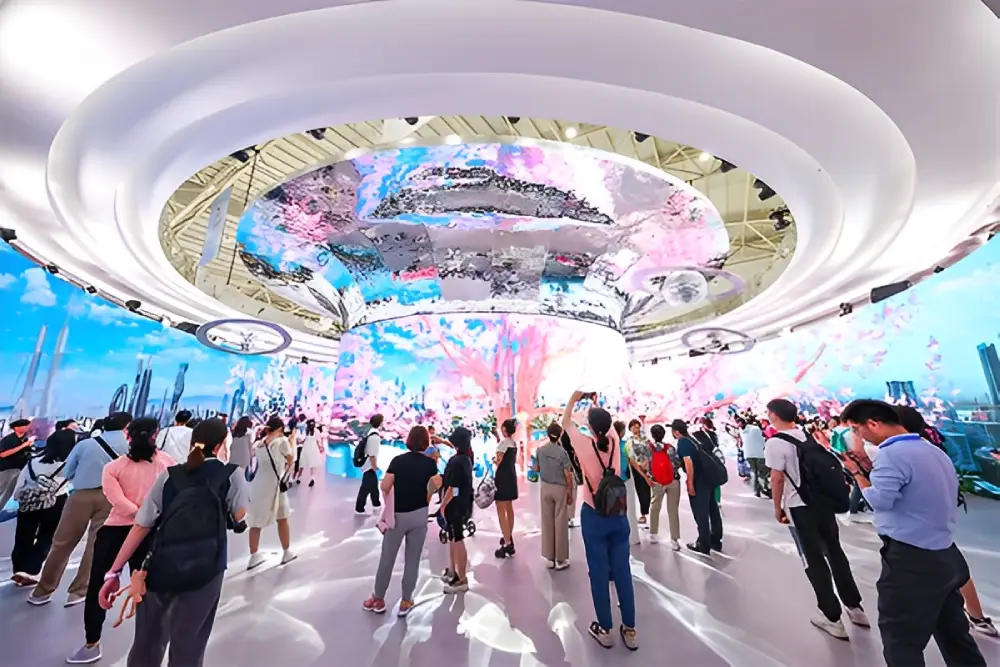
INTRODUCTION TO THE PARTNERSHIP: BREAKING THROUGH THE PROFIT MODEL CHALLENGE
In April 2024, Mate Universe (玛特宇宙) and Dingdang Cultural Tourism (叮当文旅) signed a landmark strategic partnership at the Liangzhu National Archaeological Site Park in Hangzhou. This partnership marks a new phase in the fusion of Web3 technology and cultural tourism. The partnership, led by Mate Universe CEO Chen Bo and Dingdang Cultural Tourism Founder Li Hong, signifies a bold new venture for the cultural tourism industry, focusing on how the metaverse can address challenges related to a single profit model in the sector.
INNOVATING PROFIT MODELS WITH WEB3 AND METAVERSE TECHNOLOGY
The key challenge for many cultural tourism brands is their reliance on traditional profit models that have become increasingly unsustainable in today’s digital-first economy. Many brands in this space struggle with limited revenue streams that depend heavily on physical ticket sales, tour guides, or merchandise—creating a bottleneck for growth and profitability.
This collaboration between Mate Universe and Dingdang Cultural Tourism seeks to solve this issue by bringing Web3 technology into the tourism sector. Through metaverse integration, digital collectibles (NFTs), and virtual worlds, the partners aim to redefine profit models and enable new revenue streams for cultural tourism
HOW THE PARTNERSHIP WORKS: VIRTUAL WORLDS FOR PHYSICAL EXPERIENCES
Mate Universe, a leader in Web3 technology, is well-versed in building metaverse ecosystems that bridge the gap between virtual and physical worlds. By combining its expertise in Web3 branding and digital transformation, the company has already made strides in creating virtual spaces that can merge real-world attractions with immersive digital experiences.
Dingdang Cultural Tourism, a leading player in the tourism industry, provides a wealth of cultural heritage, tourism routes, and cultural products. Together, they are creating an integrated model that blends offline tourism with virtual world elements.
EMPOWERING USERS THROUGH WEB3 COMMUNITY INTEGRATION
A crucial aspect of this partnership is its focus on community engagement through the metaverse. Unlike traditional marketing or passive tourism experiences, this collaboration will actively involve users in the creation of the tourism experience.
Private Communities and Engagement: The partnership aims to create private virtual communities within the metaverse. Users will be able to participate in the co-creation of experiences, share feedback, and vote on future developments within the digital space. This will result in a more personalized and interactive tourism journey, where the boundaries between the digital and real world blur.
THE IMPACT ON PROFITABILITY: DIVERSIFYING REVENUE STREAMS
The use of Web3 and the metaverse allows both partners to move beyond traditional profit models in the tourism sector. By creating a digital twin of the real-world tourist experience, the partners can sell virtual tickets, NFT souvenirs, and exclusive experiences to a global audience.
Revenue Expansion through NFTs and Digital Goods: By offering NFT-based experiences, brands can unlock new streams of income. For example, selling limited-edition NFTs tied to unique virtual experiences (such as virtual tours of heritage sites) creates a new form of digital asset-based revenue that can complement the traditional ticket sales model.
Hybrid Business Models: The partnership will also offer hybrid business models, where users can purchase physical tickets or goods at the actual location while also engaging in virtual tourism or purchasing digital goods in the metaverse. For instance, a visitor’s journey could start online with a virtual tour or AR experience, then continue offline with a real-life visit to the same cultural site, driving increased foot traffic and online sales simultaneously.
Ready to Transform Your Business?
Discover how the metaverse and Web3 technologies can elevate your brand and create new revenue streams. Whether you’re in cultural tourism or any other industry, embracing these innovative strategies is essential for future success.
Download the book now to learn how you can integrate metaverse solutions into your business model and stay ahead of the competition!

WHO ARE THESE BOOKS FOR?
“Metaverses for Business: How Companies in China and the Rest of the World Are Exploring Web3” is designed for:
Brand Managers & Digital Marketers
If you’re looking to expand your brand’s presence in the digital space and understand the next frontier of consumer engagement, this book provides insights on how the metaverse is reshaping customer experiences. You’ll learn how global and Chinese companies are utilizing Web3 technologies to engage audiences in new ways.
Business Executives & Innovators
For C-suite leaders and innovation officers, this book offers actionable strategies on integrating the metaverse into your long-term business vision. It shows you how to innovate your business models, adapt to digital-first consumer behavior, and remain competitive in an ever-evolving market.
Entrepreneurs & Startups
Whether you’re launching a new business or looking to future-proof an existing one, this book offers critical information on how to leverage virtual environments, NFTs, and social commerce to drive growth. It also details how smaller brands can take advantage of the metaverse without large budgets.
Technology And Web3 Enthusiasts
For those who are passionate about cutting-edge technology and its impact on various sectors, this book is a guide to understanding the integration of Web3 technologies and the metaverse in real-world applications. It provides insight into how these technologies are impacting everything from retail to entertainment, to social platforms.
Industry Professionals
If you work in sectors like retail, fashion, gaming, entertainment, and tourism, this book provides deep dives into how the metaverse is transforming these industries. Learn how to apply virtual technology to create engaging customer experiences, increase sales, and develop new business models.
Investors
If you’re looking to invest in the future of Web3 and the metaverse, this book provides essential information about market trends, key players, and investment opportunities. It highlights how businesses in China and the West are capitalizing on the growth of virtual technologies.
About The Authors
ASHLEY DUDARENOK
Ashley Dudarenok is a globally recognized expert in China’s digital economy and an accomplished serial entrepreneur with more than 15 years of experience helping global brands succeed in one of the world’s most dynamic and rapidly evolving markets. As the founder of ChoZan and Alarice, Ashley has become a leading authority on China’s digital transformation, guiding companies through the complexities of social media marketing, influencer partnerships, consumer behavior shifts, and digital engagement strategies in China.
A three-time Amazon bestselling author, Ashley’s work focuses on how businesses can thrive in China’s unique digital ecosystem. Her expertise spans across social commerce, KOL marketing, content creation, and brand innovation, with a deep understanding of the tools and strategies necessary to succeed in a market that is unlike any other in the world.
Ashley has helped numerous Fortune 500 companies, high-growth startups, and renowned global brands navigate the Chinese digital landscape and unlock new growth opportunities. Her practical, actionable insights have earned her recognition as one of the most sought-after thought leaders in China’s rapidly evolving digital marketing space.
Her expertise has been featured in prestigious outlets such as Bloomberg, CNBC, SCMP, and Forbes, making her a trusted voice for businesses looking to expand in China.With a mission to bridge the gap between the East and the West, Ashley’s passion lies in translating China’s most innovative business strategies for global leaders, ensuring they are equipped to navigate the future of commerce.
Ashley’s approach combines in-depth market research, hands-on experience, and a forward-thinking mindset, enabling businesses to stay ahead of the curve in a digital-first world. Whether advising top executives, working directly with brands, or delivering keynote speeches at industry events, Ashley is at the forefront of China’s digital revolution, helping businesses future-proof their strategies for success.
QUOTES FROM THE BOOK
Faq About Metaverses For Business
Isn’t the metaverse dead? Aren’t companies shutting down their metaverse teams?
While major tech companies like Meta and Microsoft have restructured or rebranded their metaverse efforts, development has not stopped.
In 2024, cities like Seoul and Dubai continue building large-scale digital twin projects, while luxury brands like Dior and Burberry are launching new virtual fashion experiences.
The hype cycle ended, but strategic development continues. Brands that recognize the quieter, deeper evolution of the metaverse are positioning themselves for future advantage.
Is it necessary for all businesses to create a metaverse, AR experience, or NFT project now?
No.
Not every brand needs to build its own virtual world.
However, understanding Web3 and immersive technology trends is now essential for long-term strategic planning.
Even simple steps — like hosting virtual customer events or offering AR shopping filters — can future-proof a business against coming shifts in consumer expectations.
Does entering the metaverse or Web3 require a massive marketing budget?
Not necessarily.
Small businesses can:
- Use existing platforms like Roblox, Spatial, or TikTok’s AR filters.
- Test small NFT loyalty programs without huge overheads.
- Partner with micro-creators or local Web3 artists to co-create limited-edition assets.
The key: Start with low-risk pilots before scaling. Agile experimentation often beats massive, slow-moving projects.
What are digital twins, and how do they connect to the metaverse?
Digital twins are real-time virtual replicas of physical spaces or systems.
Examples:
- Shanghai’s full digital twin city is used for smart traffic management and disaster response.
- Siemens and BMW use digital twins to simulate factories before building them.
Digital twins are one of the most mature and commercially viable parts of the early metaverse.
They help optimize real-world operations and offer new business models for industries like urban planning, logistics, healthcare, and construction.
If the metaverse is 5-10 years away, why should brands act now?
Because early preparation = competitive advantage.
When the internet first emerged, brands that adapted early — like Amazon and eBay — dominated new markets.
Today’s opportunity mirrors that moment.
Waiting until Web3 or immersive tech is fully mature will leave brands scrambling for relevancy. Small, early investments in skills, partnerships, and customer education will pay off disproportionately later.
Is the metaverse only about cryptocurrencies and NFTs?
No.
While cryptocurrencies and NFTs are tools within Web3, they are not the essence of the metaverse.
Core developments focus on:
- Immersive experiences (AR, VR, XR)
- Decentralized identity and ownership
- Persistent digital communities
Forward-thinking brands are focusing on community engagement, experiential marketing, and immersive retail — not just speculative assets.
How are Chinese companies approaching the metaverse differently from Western brands?
China is taking a mobile-first, platform-integrated, and government-guided approach.
- Platforms like Baidu, Tencent, and Alibaba focus on merging AR/VR with super-app ecosystems.
- Regulation restricts open cryptocurrency markets but encourages virtual goods, avatars, and digital citizenship concepts.
- China’s “Digital Twin Cities” program is expanding across multiple provinces.
Lesson:
Instead of purely decentralized ideals, China is building a practical, integrated Web3 economy rooted in day-to-day utility and mobile convenience.
What can smaller brands realistically do today to prepare for the metaverse?
Practical steps for SMBs include:
- Launching limited AR try-ons or 360-degree product tours.
- Creating simple NFT-based membership or loyalty rewards.
- Building a strong private community on platforms like Discord or WeChat.
- Partnering with virtual influencers or digital creators.
Even minimal investment now builds internal experience and brand credibility for future expansion.
Will the future metaverse be one unified platform, or many separate ecosystems?
The future of the metaverse is likely to consist of a network of interconnected ecosystems rather than a single unified platform, often referred to as a “mega-metaverse.” Platforms such as Roblox, Fortnite, Spatial, Decentraland, and Meta Horizons are developing independently, indicating that walled gardens and exclusive ecosystems will dominate in the short to mid-term. As a result, brands must remain agile by focusing on building a presence across multiple platforms instead of relying on a single space.
Are there any business sectors outside of gaming where the metaverse is growing fastest?
Yes, the metaverse is experiencing significant growth in several non-gaming sectors. In healthcare, innovative applications such as VR therapy and surgical training simulators, like Osso VR, have expanded across hospitals in 2024. In the field of education, projects like Tsinghua University’s Virtual Campus are creating virtual campuses and immersive training environments. The architecture and engineering sectors are leveraging the metaverse for real-time digital collaboration through virtual models. Additionally, the luxury fashion industry is embracing the metaverse with initiatives such as virtual fashion shows, notably Gucci Vault Land on Roblox. Overall, the future of the metaverse is multi-sector and multi-platform, deeply tied to real-world value creation.

GET YOUR FREE CHINA REPORT

READY TO FUTUREPROOF YOUR BRAND?
If you’re serious about building a future-ready business, Metaverses for Business is your essential guide.
Learn from China’s digital transformation, master Web3 principles, and discover how to create immersive, profitable customer ecosystems. Get your copy now and start building your brand’s
next frontier!
Explore More Books From Chozan
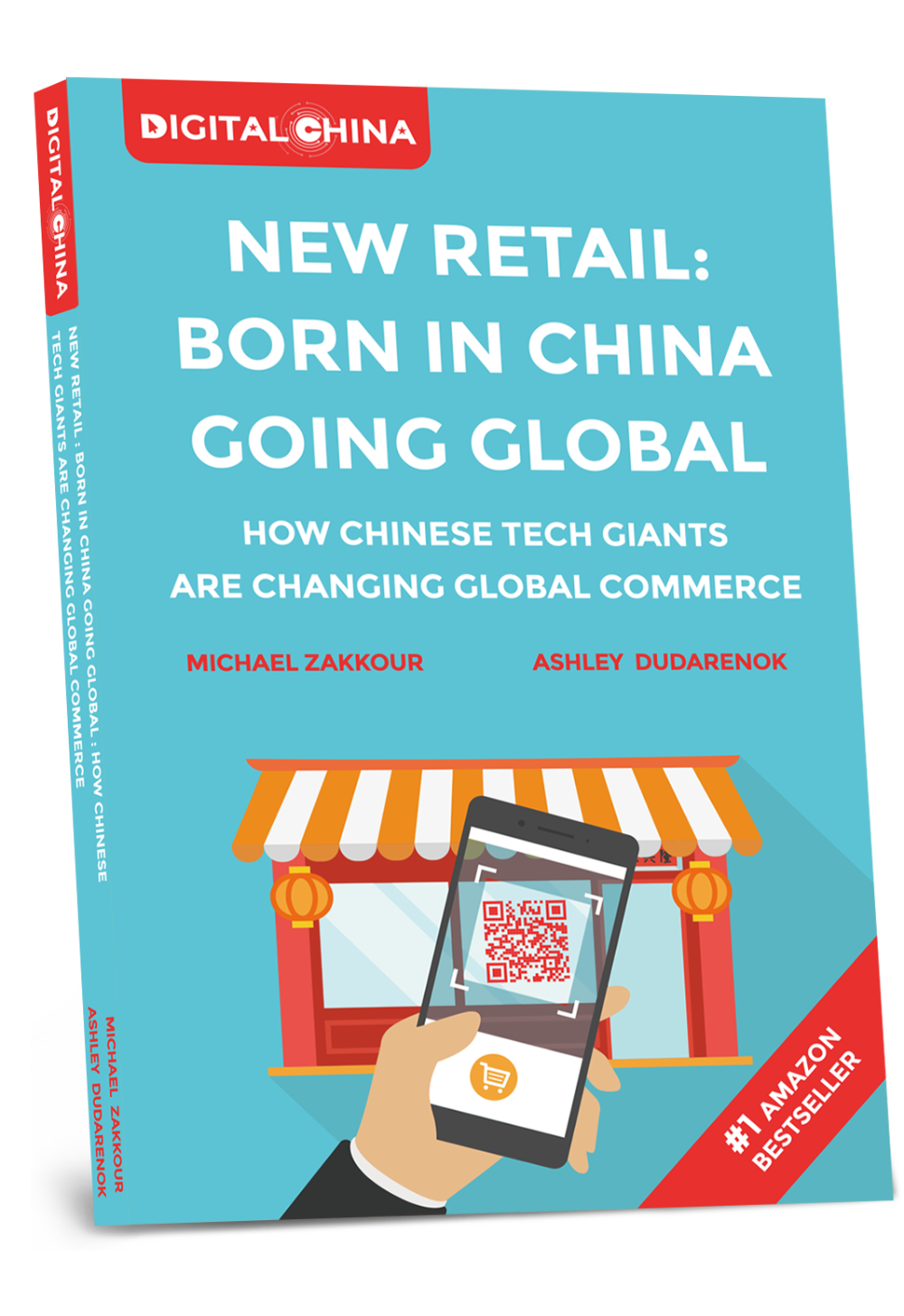
NEW RETAIL BORN IN CHINA GOING GLOBAL:
HOW CHINESE TECH GIANTS ARE CHANGING GLOBAL COMMERCE

INNOVATION FACTORY:
CHINA’S DIGITAL PLAYBOOK FOR GLOBAL BRANDS

MODERN CHINESE CONSUMER:
A HANDY GUIDE FOR MARKETERS
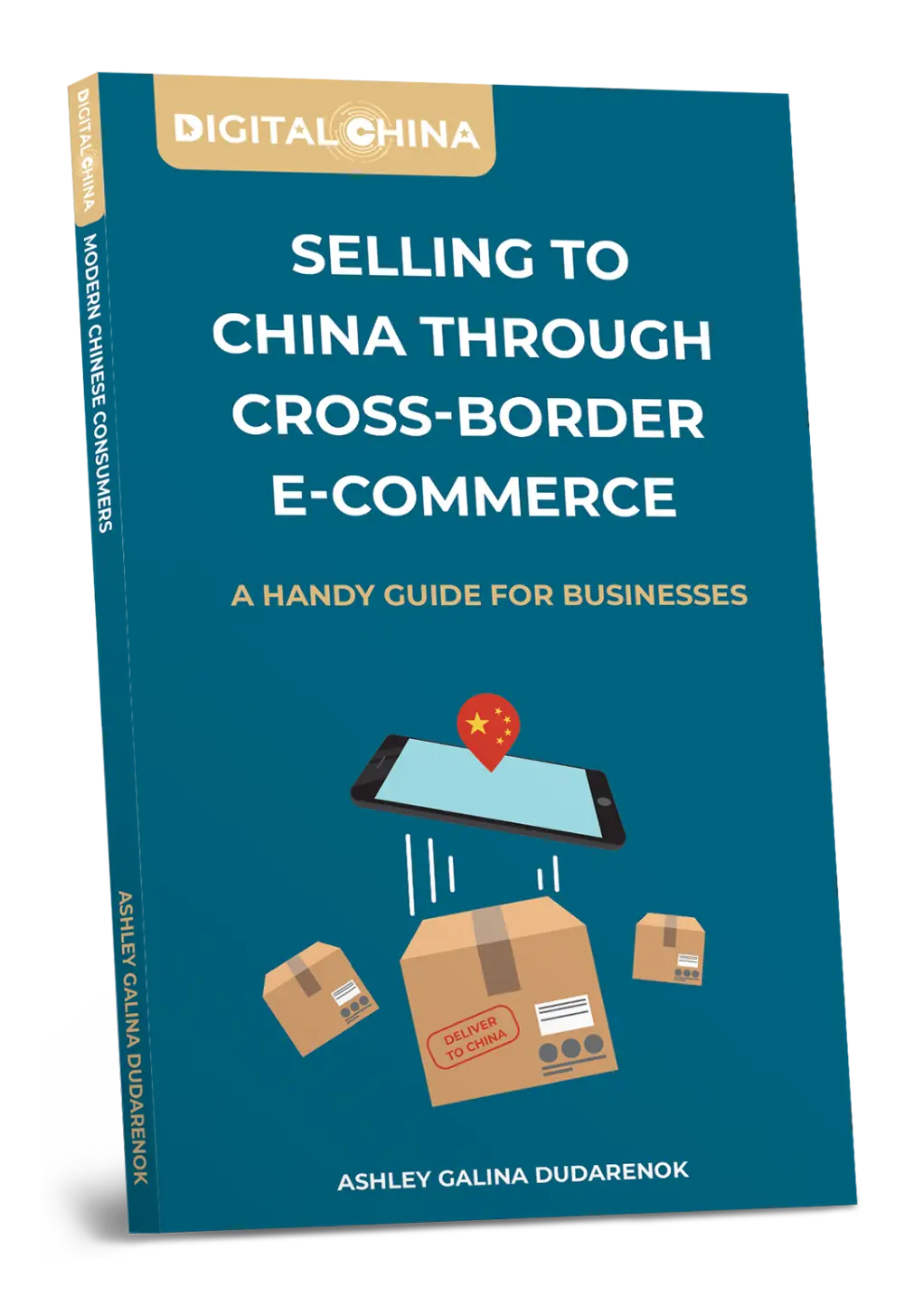
SELLING TO CHINA THROUGH CROSS-BORDER E-COMMERCE
A HANDY GUIDE FOR BUSINESSES
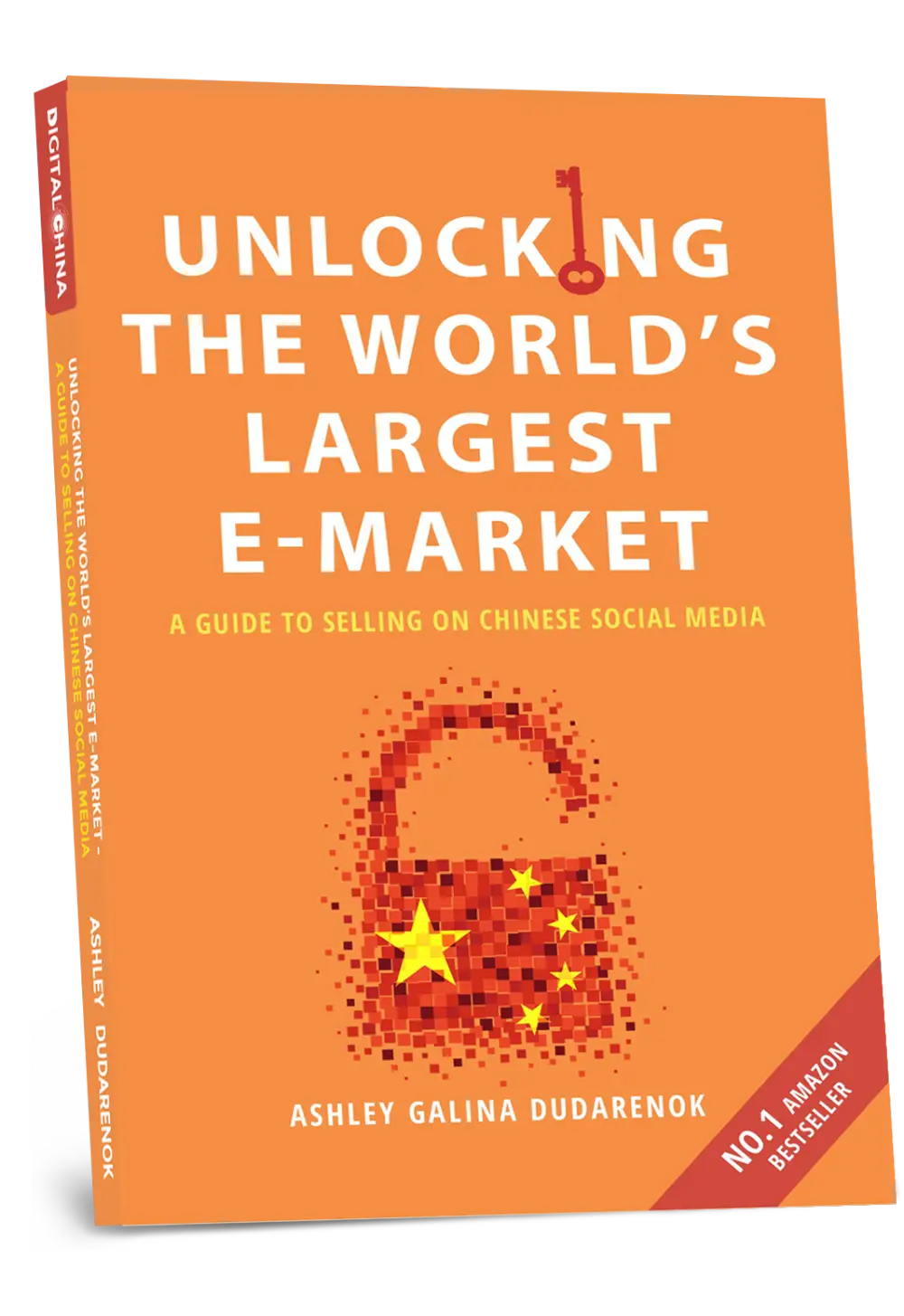
UNLOCKING THE WORLD’S LARGEST E-MARKET:
A GUIDE TO SELLING ON CHINESE SOCIAL MEDIA

HOW TO WIN WITH CHINESE TOURISTS
AN ESSENTIAL CUIDE FOR THE TRAVEL AND TOURISM INDUSTRY




